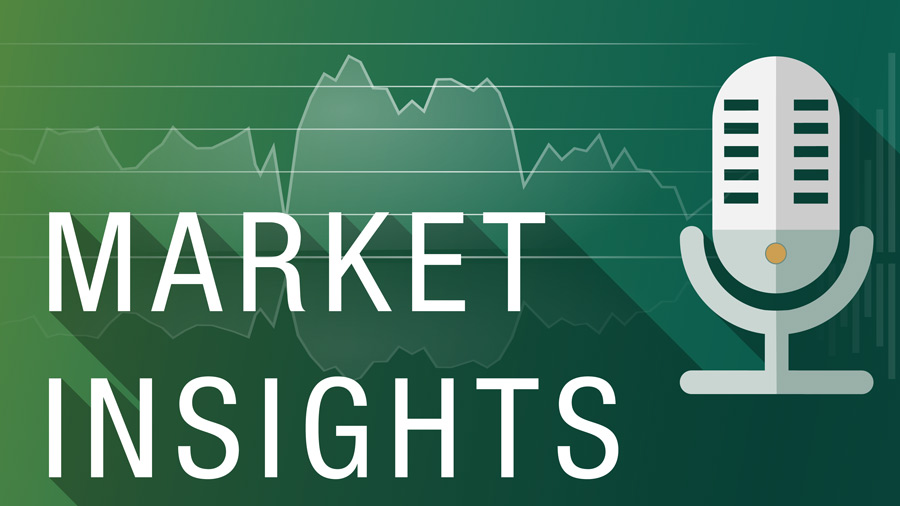Personal Wealth Management / Market Analysis
Ongoing Growth in the Old World
Eurozone GDP grew again in Q3, led by a surprising contributor.
With two months left in the year, the global economy continues to weather trade and political uncertainty—with the latest evidence coming from Euroland. For all the brouhaha over tariffs and local political turbulence, the eurozone economy continues faring better than many think, a big reason we remain bullish about non-US opportunities, especially on the Continent. The latest data show fears of political instability hurting economic activity—and inflation potentially resurging—continue to prove false.
The Eurozone’s Resilient Growth
Eurozone Q3 GDP rose 0.2% q/q (0.9% annualized), up from Q2’s 0.1% q/q (0.5% annualized).[i] A 0.9% annualized growth rate isn’t gangbusters and reflected two large economies’ meager results: Germany’s flat quarter and Italy’s -0.2% annualized contraction.[ii] That said, Germany’s flatness was an improvement from Q2’s -0.8% annualized slip.[iii] Moreover, German statistics agency Destatis also revised Q2 GDP’s contraction up from an earlier estimate of -0.3% q/q—summertime output wasn’t as weak as initially reported.[iv]
Among the 20-member currency bloc, only 3 nations reporting thus far (Lithuania, Ireland and Finland) contracted on a quarter-over-quarter basis.[v] Now, GDP has its limits like any other economic indicator. For example, the multinational tech and pharmaceutical firms headquartered in Ireland can hugely distort the Emerald Isle’s GDP. Those global companies’ accounting moves can skew exports, overshadowing domestic developments. But overall, Q3 GDP data indicate most eurozone economies are plodding along despite the uncertain global trade environment.
On the Big Two
France, the eurozone’s second-largest economy, delivered the biggest surprise after GDP grew 0.5% q/q (2.0% annualized), beating expectations of 0.2% q/q.[vi] Net trade (exports minus imports) was the biggest contributor, adding 0.9 percentage point to growth, though this isn’t necessarily all positive. Though exports jumped 2.2% q/q, imports slipped -0.4%.[vii] Based on GDP’s calculations, trade added more to France’s headline growth, but imports represent domestic demand—so its contraction isn’t anything to cheer. And this follows a rather big uptick in Q2 imports (1.4% q/q), so it may be a matter of importers fearing tariff effects then, leaving a pothole behind. Imports aside, other domestic demand measures pointed positively. Household consumption grew 0.1% q/q, repeating Q2’s pace, and gross fixed capital formation accelerated from 0.0% to 0.4%, led by investment in services (excluding construction).[viii]
Now, Q3 GDP activity occurred before France’s politically volatile October, so it is possible last month’s theatrics discouraged some spending or investment. But French political uncertainty has persisted since President Emmanuel Macron called a snap election in June 2024. Back then, experts worried uncertainty would hit growth. Yet from Q2 2024 – Q3 2025, French GDP contracted just once in six quarters—political instability hasn’t roiled French output.[ix]
On the flipside, German GDP—the eurozone’s largest—was unchanged in Q3. As we pointed out back in August, German GDP has been bumpy since 2022, including a three-quarter contraction from Q4 2023 – Q2 2024.[x] Q3’s results extend that longer-running trend. But the lackluster result has likely disappointed those who thought new Chancellor Friedrich Merz’s public investment plan would turbocharge growth.
We had doubts about that from the onset, as public spending usually takes a while to reach the economy (if it does at all). For instance, Germany just approved its 2025 budget in September, and the government is still identifying which infrastructure investments to pursue.[xi] By the time it does, clears necessary approvals and breaks ground, we could see an entirely different economic backdrop. The government hasn’t even decided how or whether to subsidize German heavy industry’s electricity costs, despite debating it since 2023 and politicians’ broad agreement some measures need to be taken—and this doesn’t even face permitting issues or construction hurdles. To be clear, we don’t think the German economy needs a government lifeline—growth is more resilient than many think (with its overlooked services sector offsetting industrial weakness). But it is a useful reminder that politicians’ pledges to boost the economy should be taken with a grain of salt—the effects aren’t as big and timely as many hope (or fear).
Inflation Is Normal. Period.
As many speculate about the European Central Bank’s (ECB’s) next move, eurozone consumer prices rose 2.1% y/y in October, slowing from September’s 2.2%.[xii] Among the underlying components, only services price growth accelerated (from 3.2% y/y to 3.4%)—all other main categories slowed.[xiii] Some commentators fretted over the acceleration in services prices, worrying higher prices could spill into the rest of the economy.
Yes, services prices have risen more quickly than goods prices lately—and have been stubbornly rangebound between 3.0% y/y and 4.0% since January 2024.[xiv] But even after October’s uptick, services inflation remains more than half a percentage point from April’s 4.0%.[xv] Don’t overstate monthly bounciness. Taking a step back, the latest price data confirm eurozone inflation isn’t just returning to normal—it is back to normal. (Exhibit 1)
Exhibit 1: Eurozone Inflation Is Back to Normal

Source: FactSet, as of 11/3/2025. Year-over-year change in Harmonized Index of Consumer Prices (HICP) for the eurozone, Germany, France, Italy and Spain, October 2020 – October 2025. “Eurozone Long-Term Average” based on monthly year-over-year change in the eurozone’s HICP from October 2005 – December 2019 (to remove pandemic-driven skew).
Now, forward-looking markets pre-priced this economic resilience months ago, but the official data are confirming a better-than-appreciated reality—one of the contributors to budding optimism in the more-dour environment beyond America’s borders.
[i] Source: Eurostat, as of 11/3/2025.
[ii] Ibid.
[iii] Source: Eurostat, as of 10/31/2025.
[iv] Source: Destatis, as of 10/30/2025.
[v] See note i. On an annualized basis, 4 out of 10 reporting eurozone members contracted (Ireland, Italy, Lithuania and Finland).
[vi] See note i.
[vii] Source: Insee, as of 11/3/2025.
[viii] Ibid.
[ix] See note i.
[x] See note i.
[xi] “Germany’s Fading Economic Opportunity,” Editorial Board, Financial Times, 10/29/2025.
[xii] See note ii.
[xiii] See note i.
[xiv] Ibid.
[xv] Ibid.
If you would like to contact the editors responsible for this article, please message MarketMinder directly.
*The content contained in this article represents only the opinions and viewpoints of the Fisher Investments editorial staff.
Get a weekly roundup of our market insights
Sign up for our weekly e-mail newsletter.

You Imagine Your Future. We Help You Get There.
Are you ready to start your journey to a better financial future?

Where Might the Market Go Next?
Confidently tackle the market’s ups and downs with independent research and analysis that tells you where we think stocks are headed—and why.





